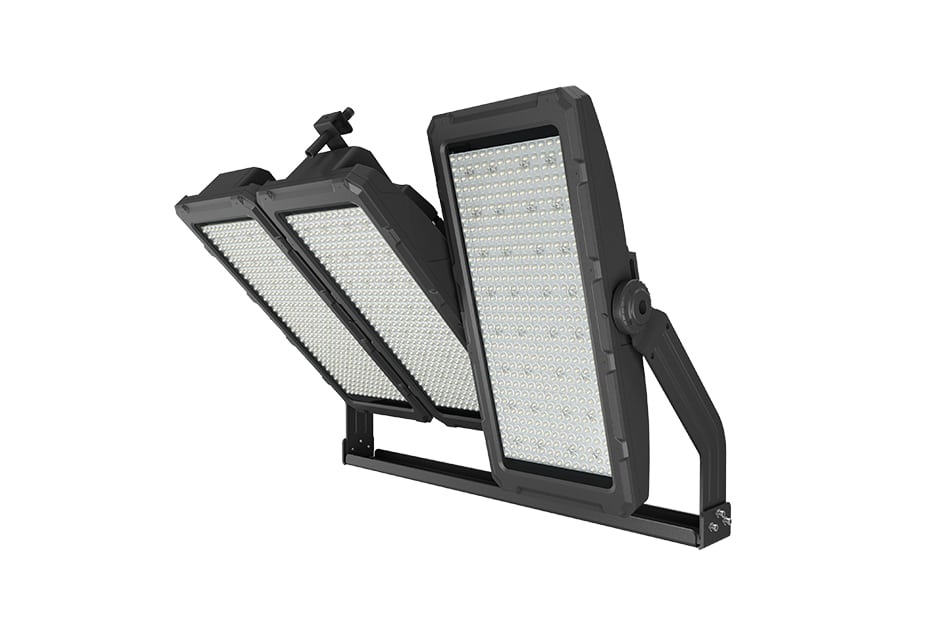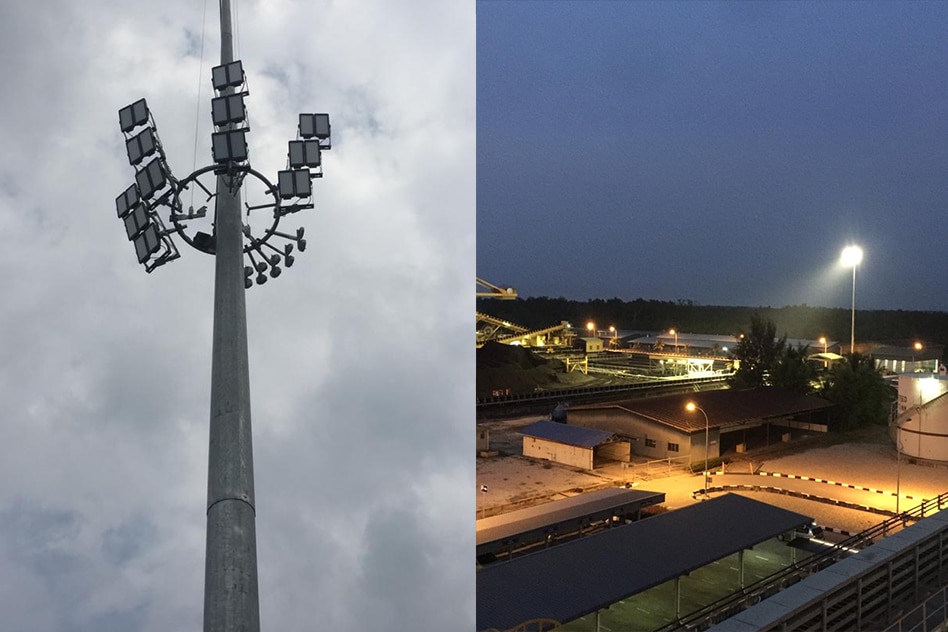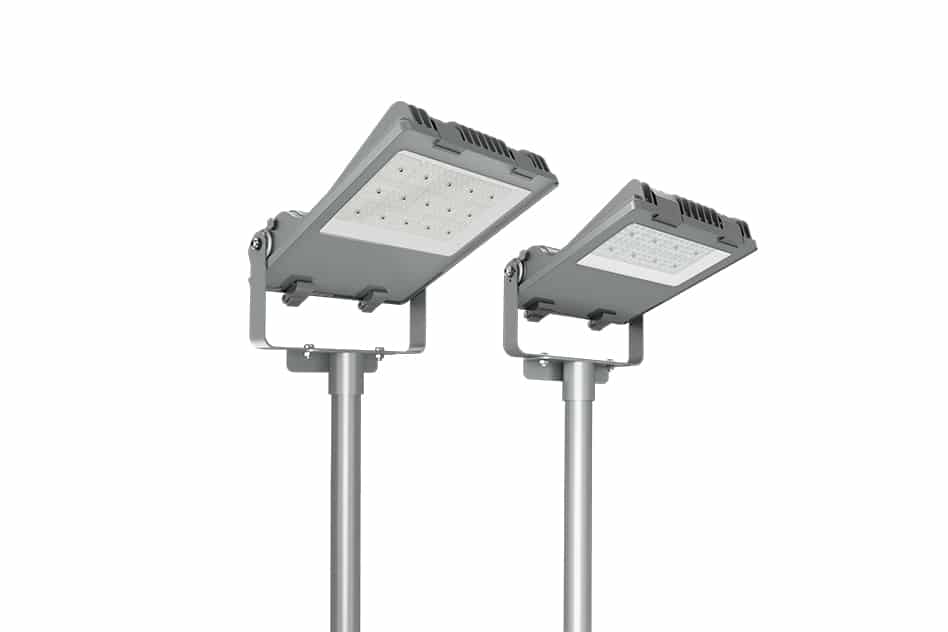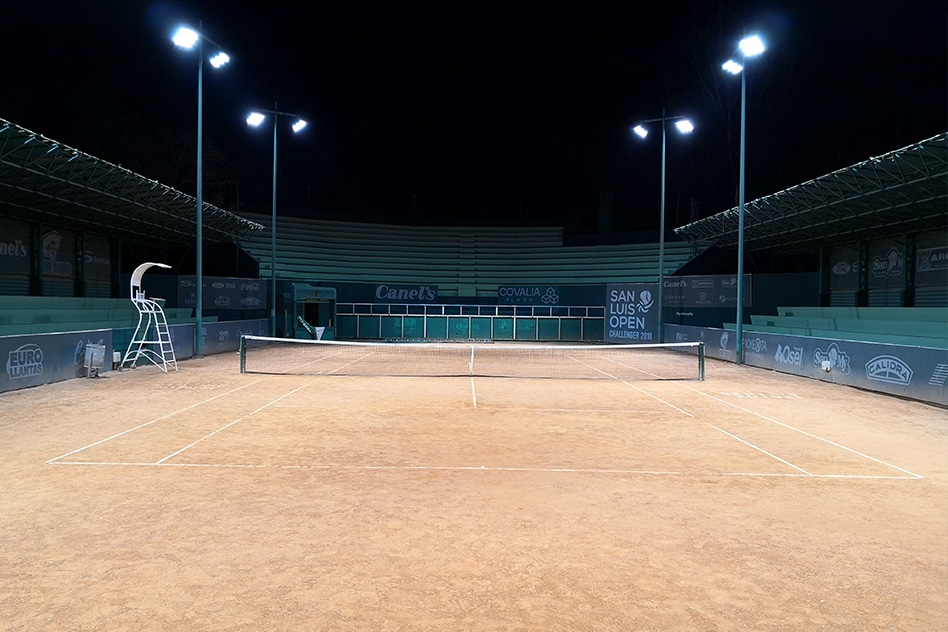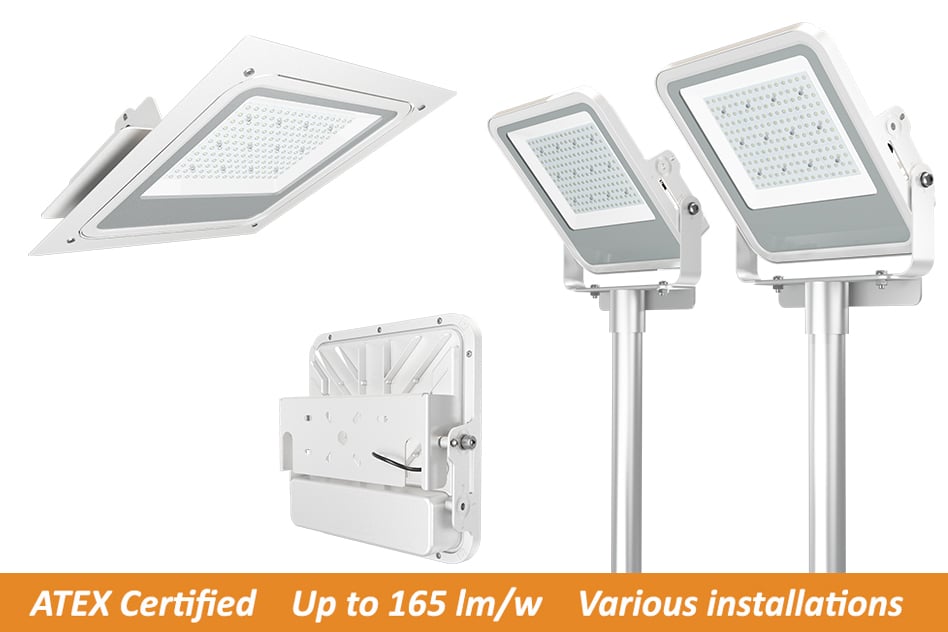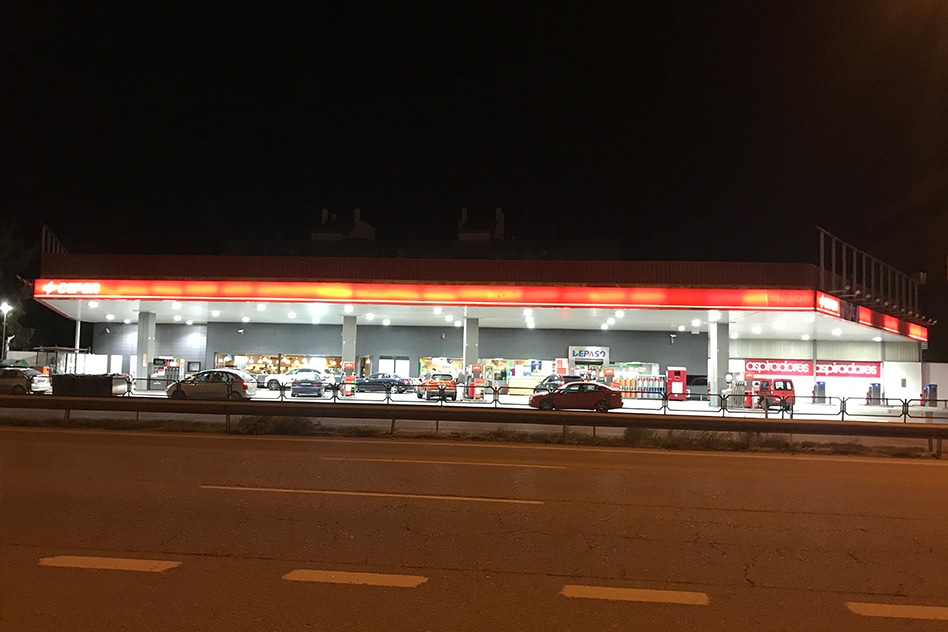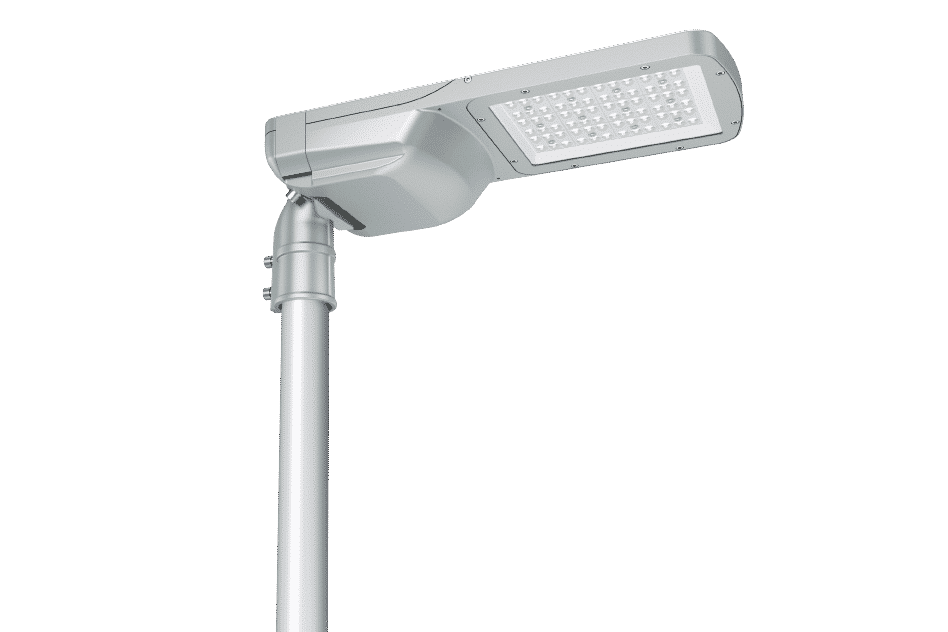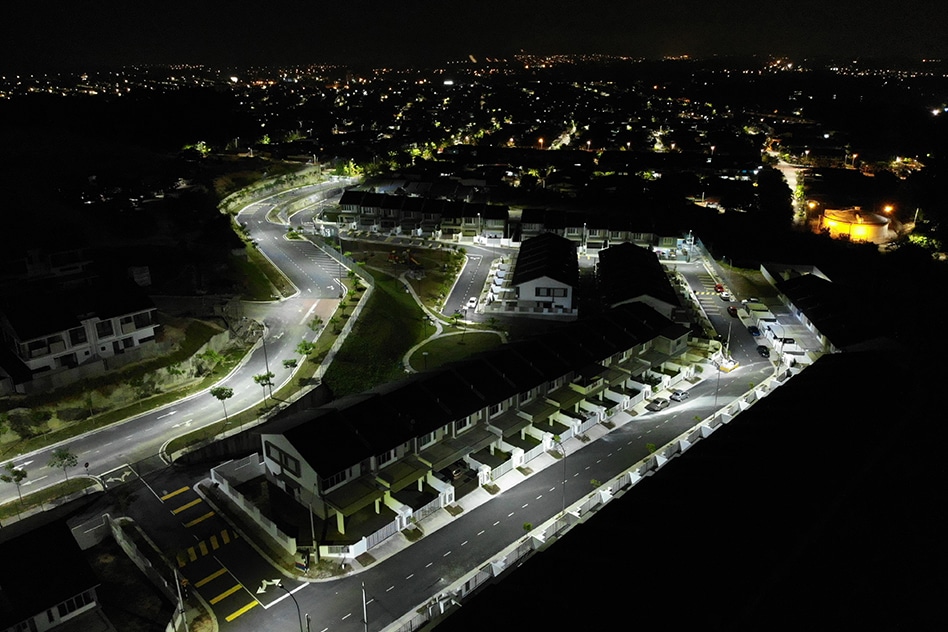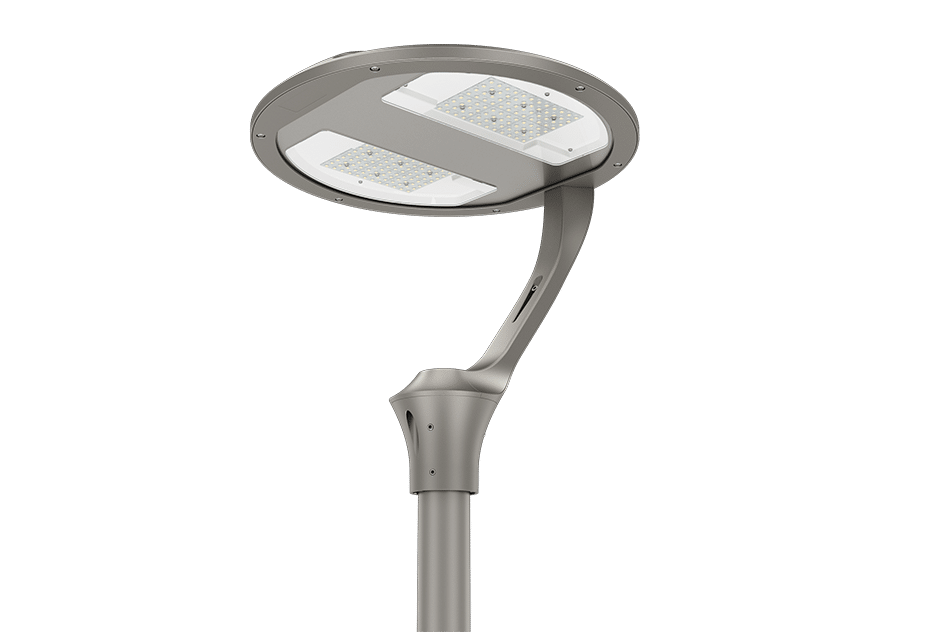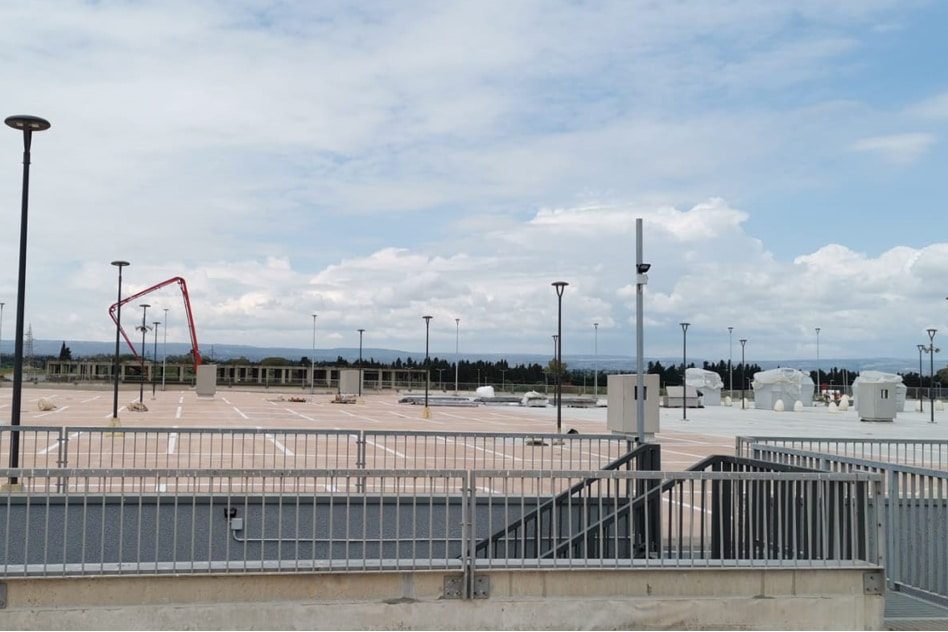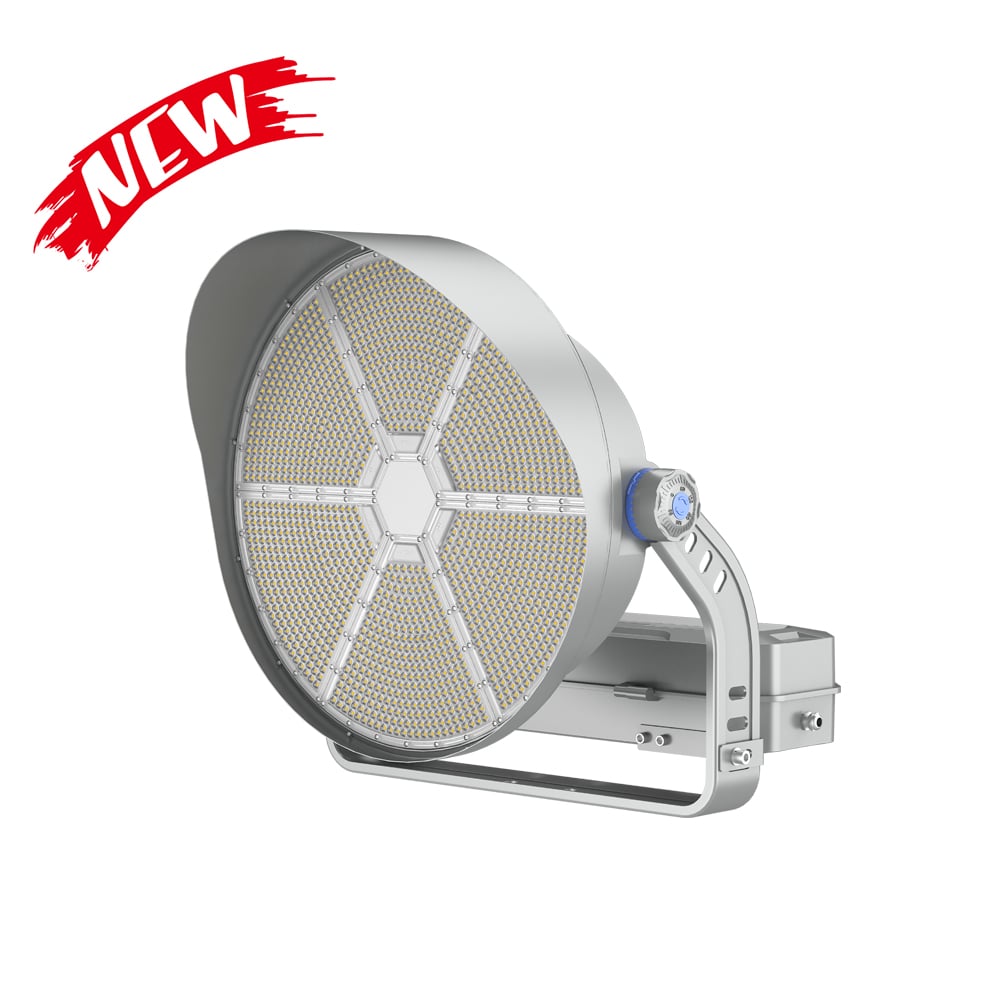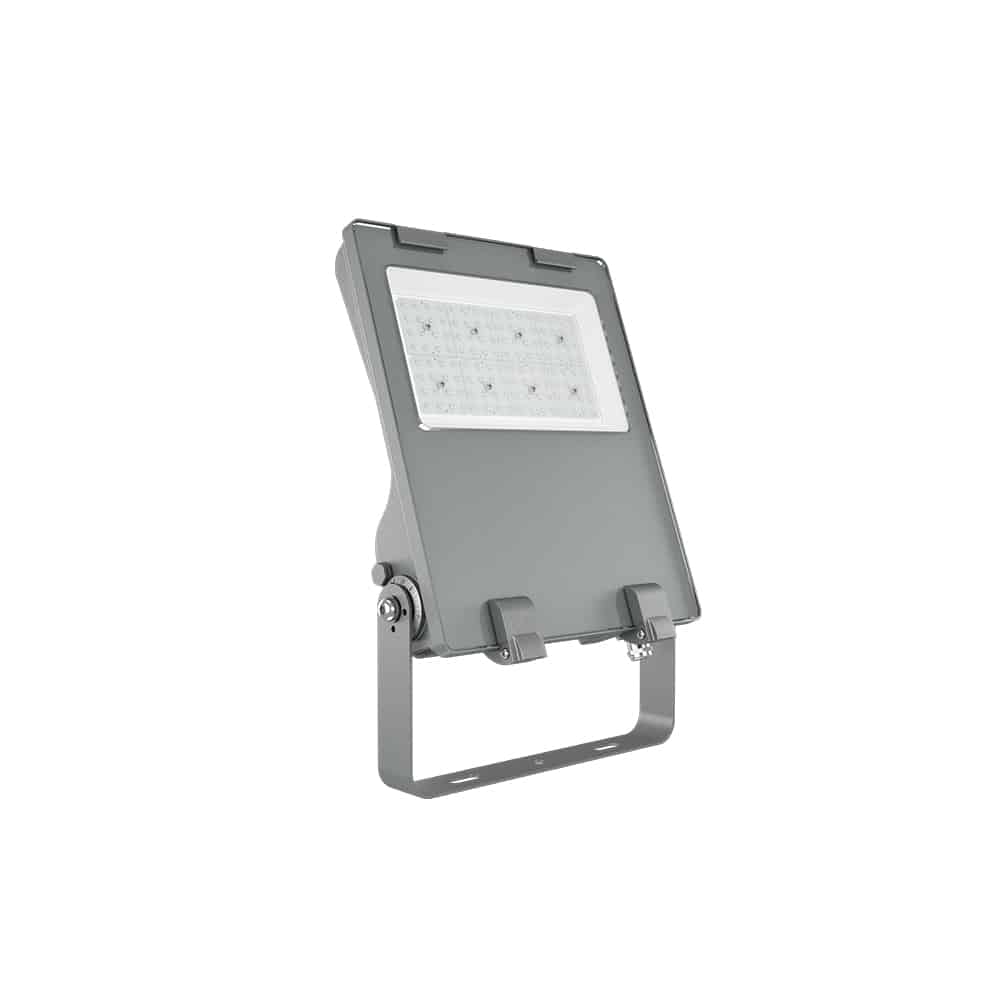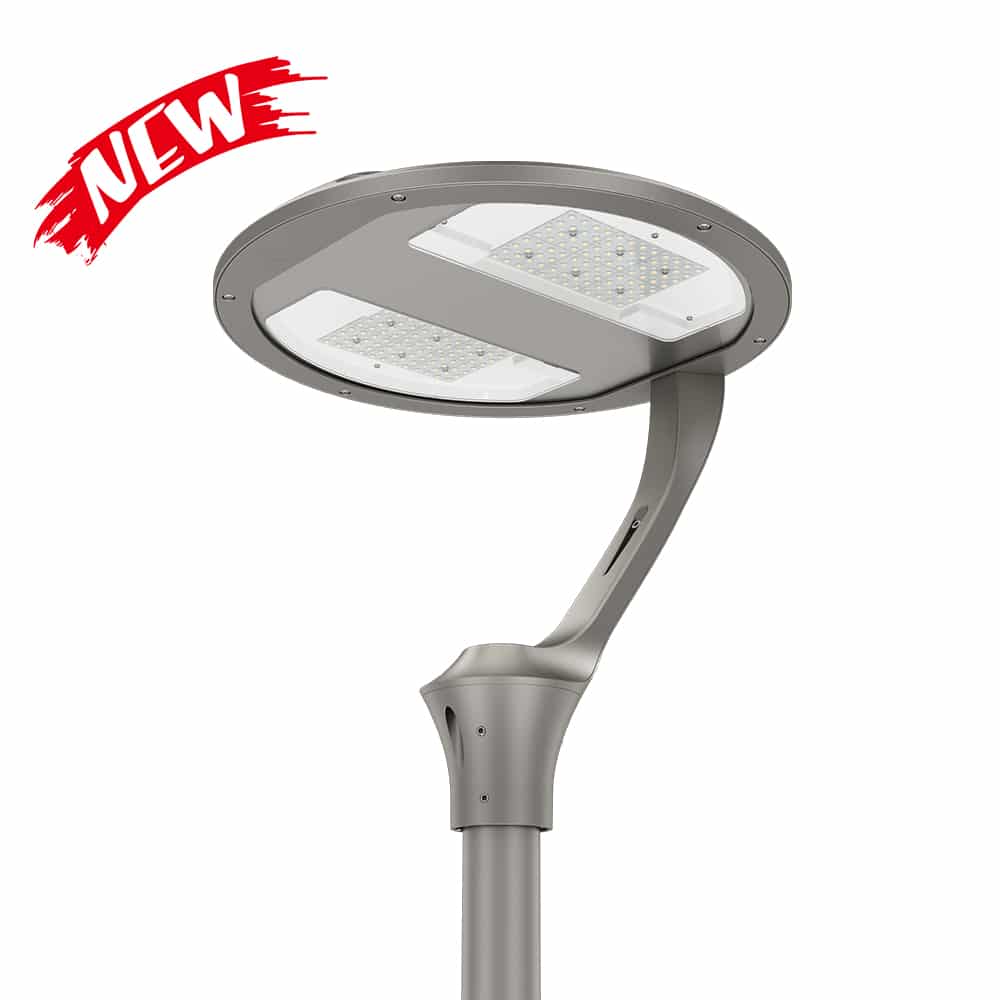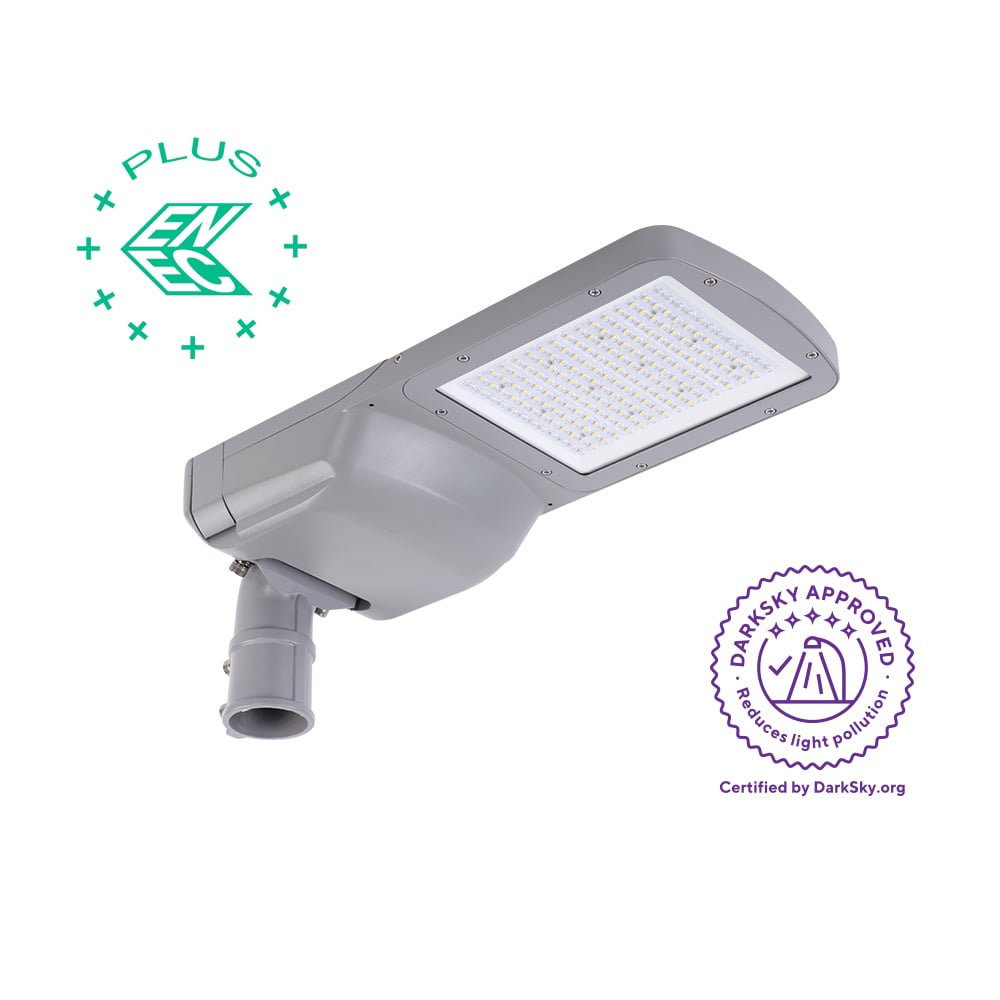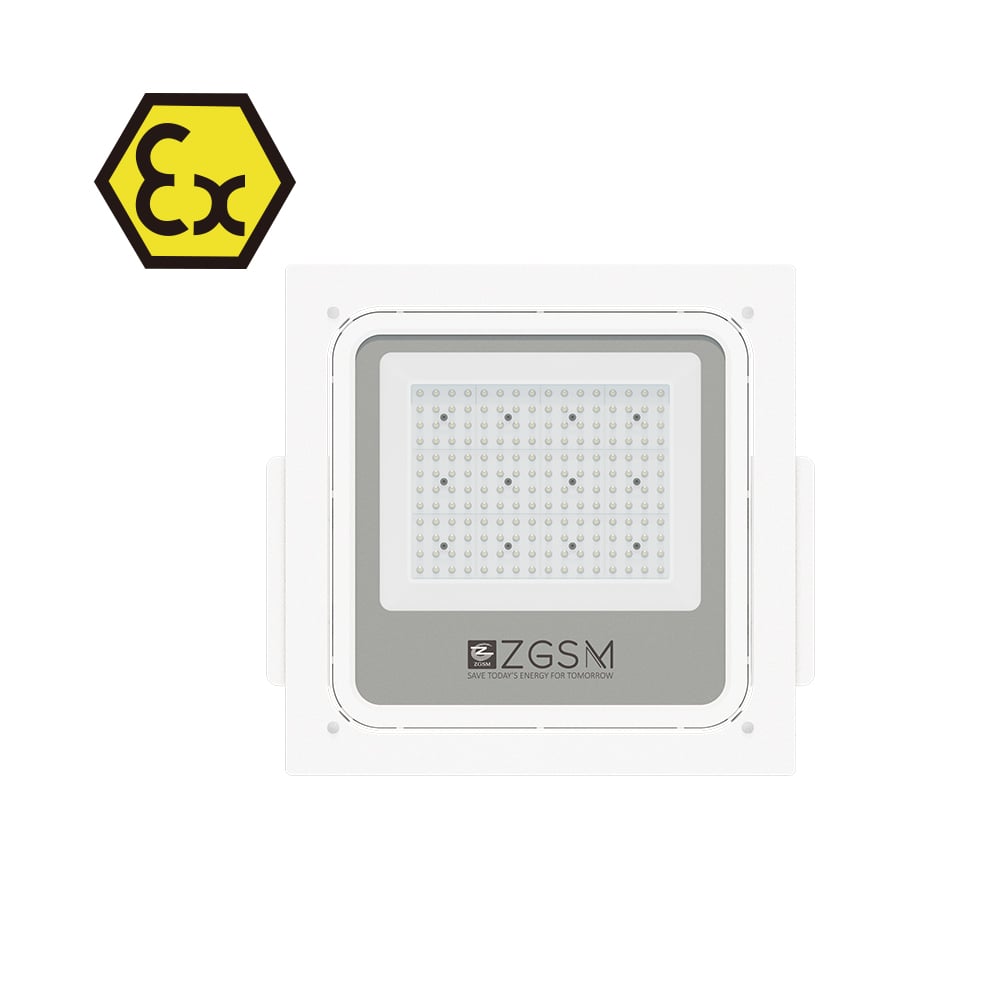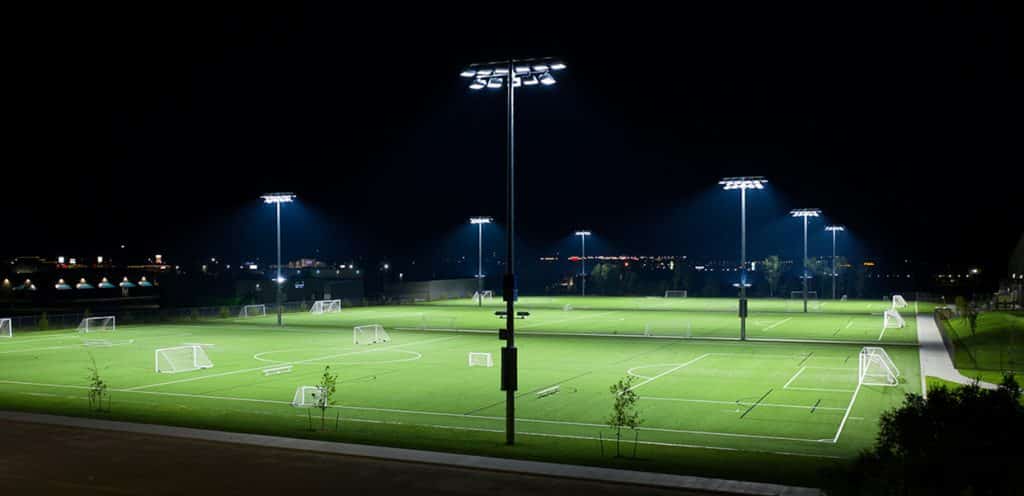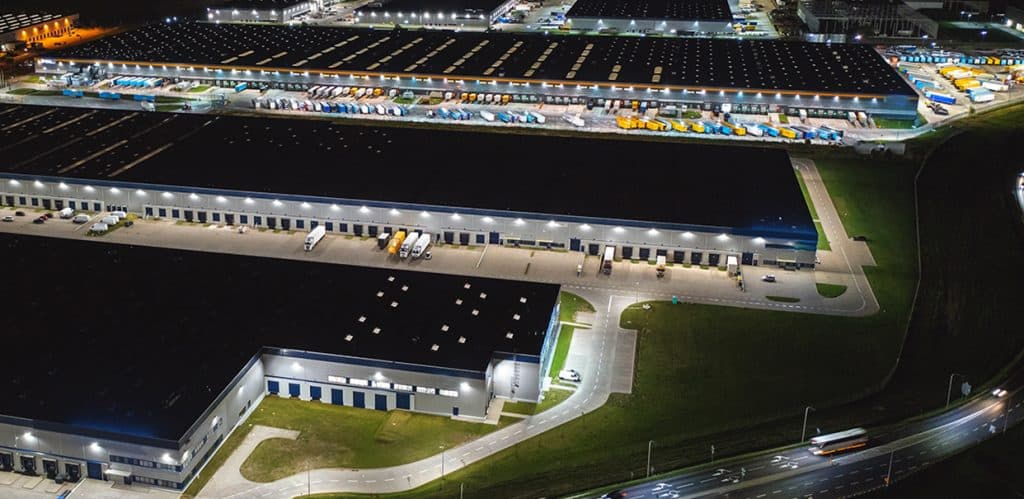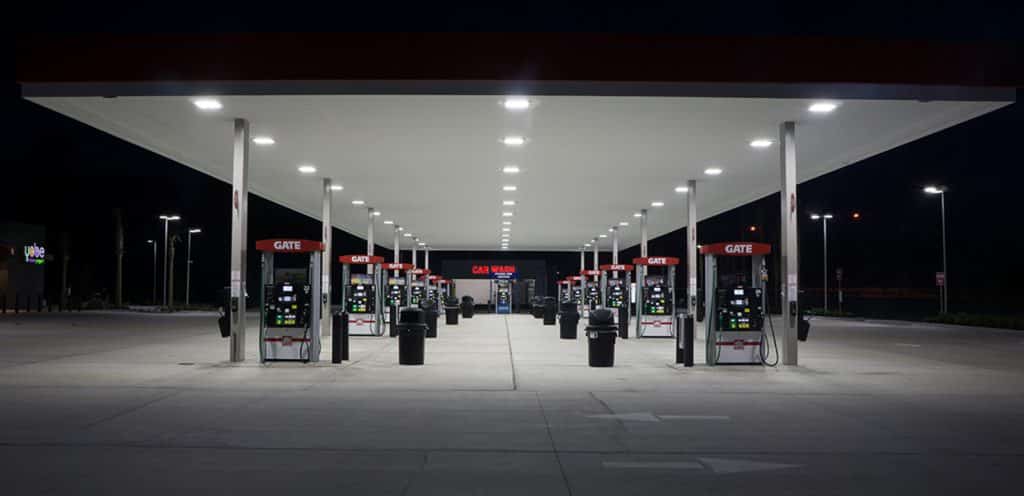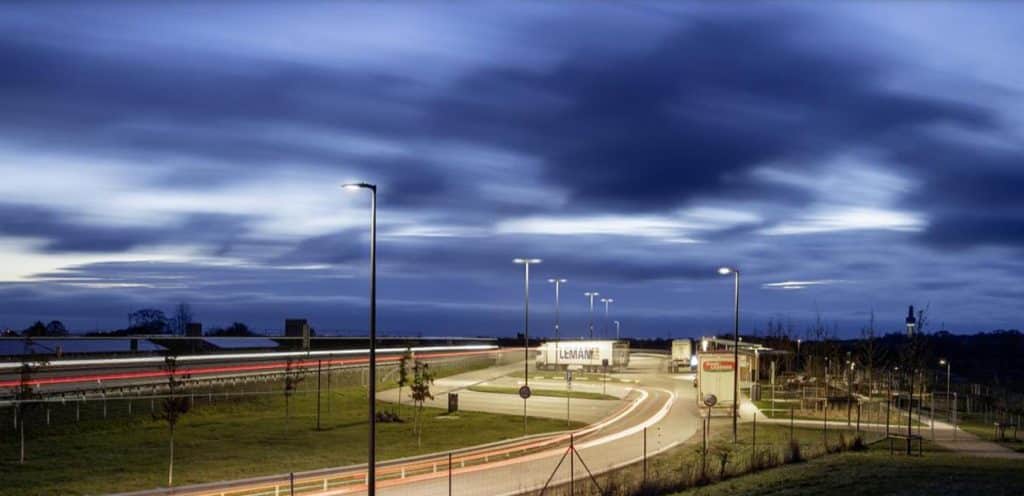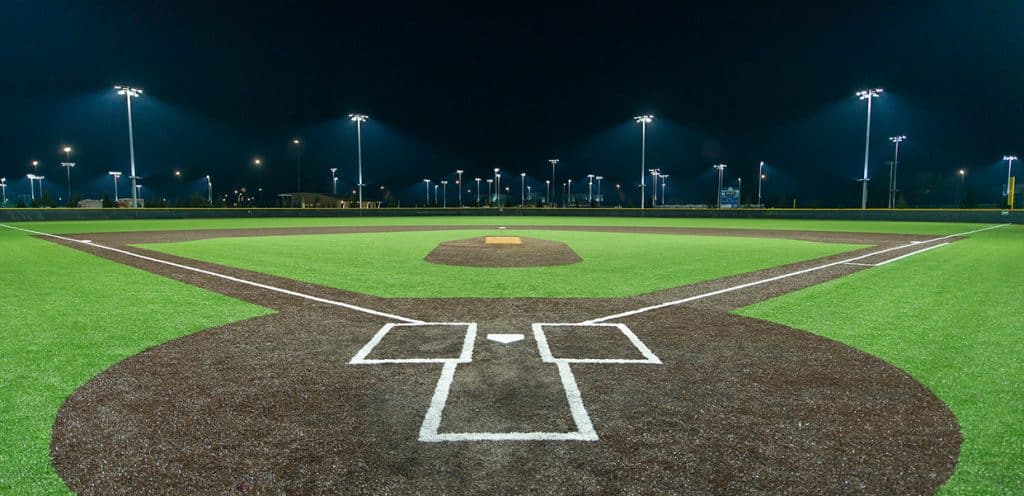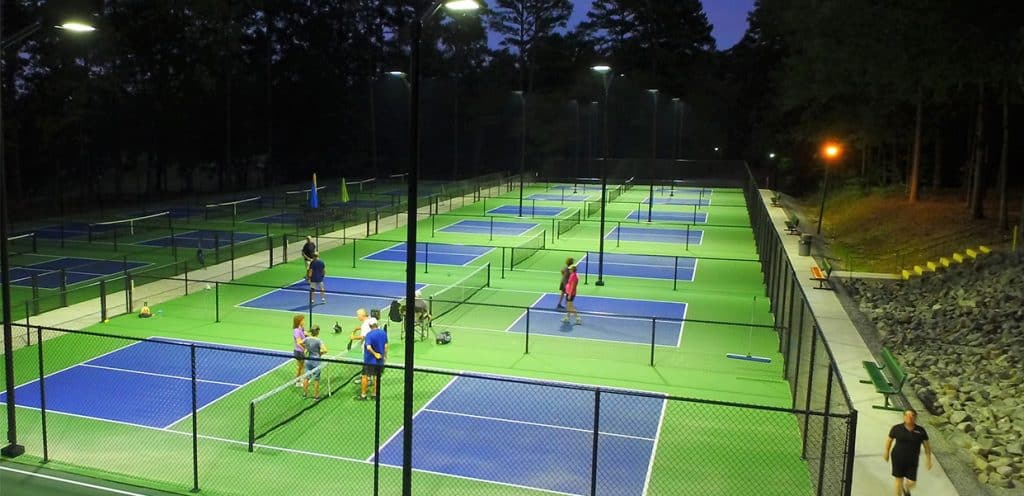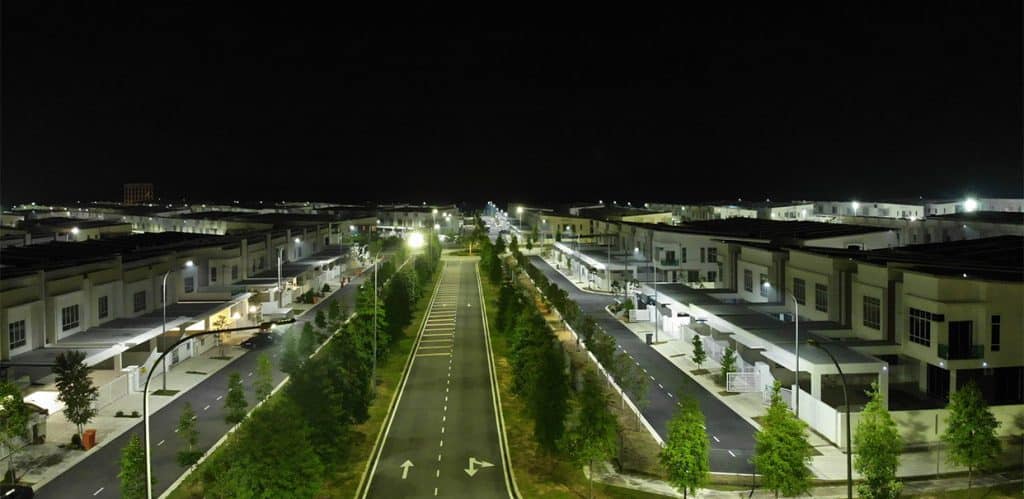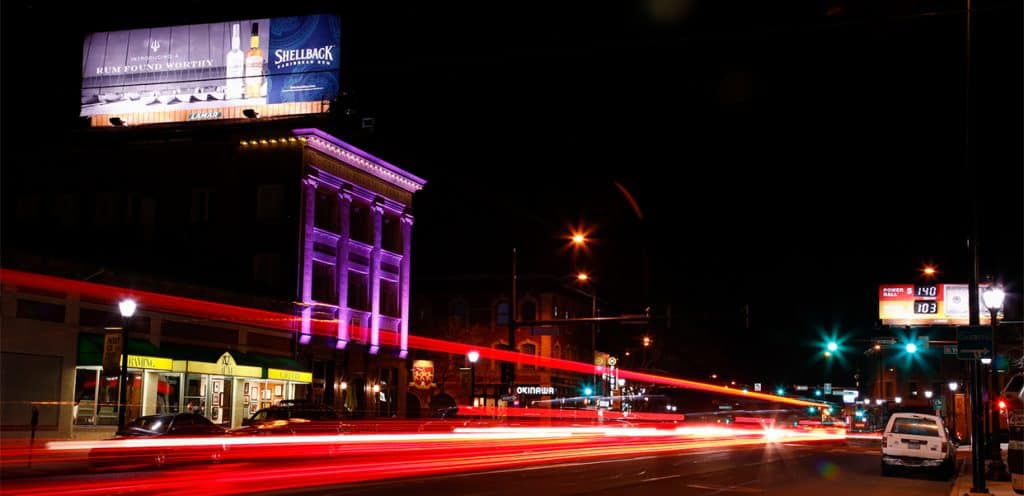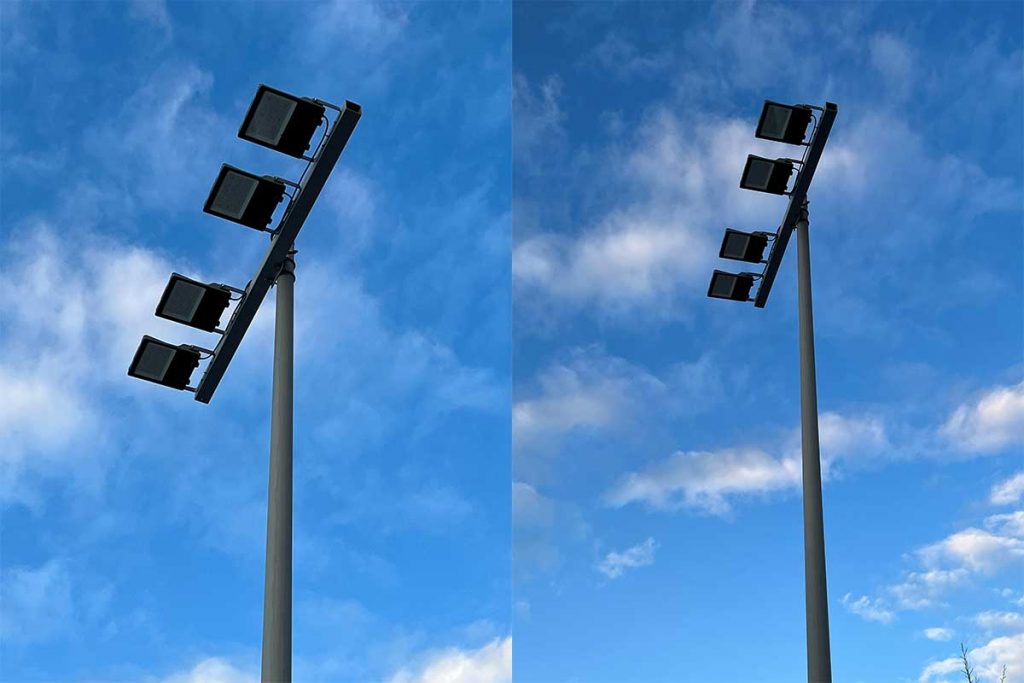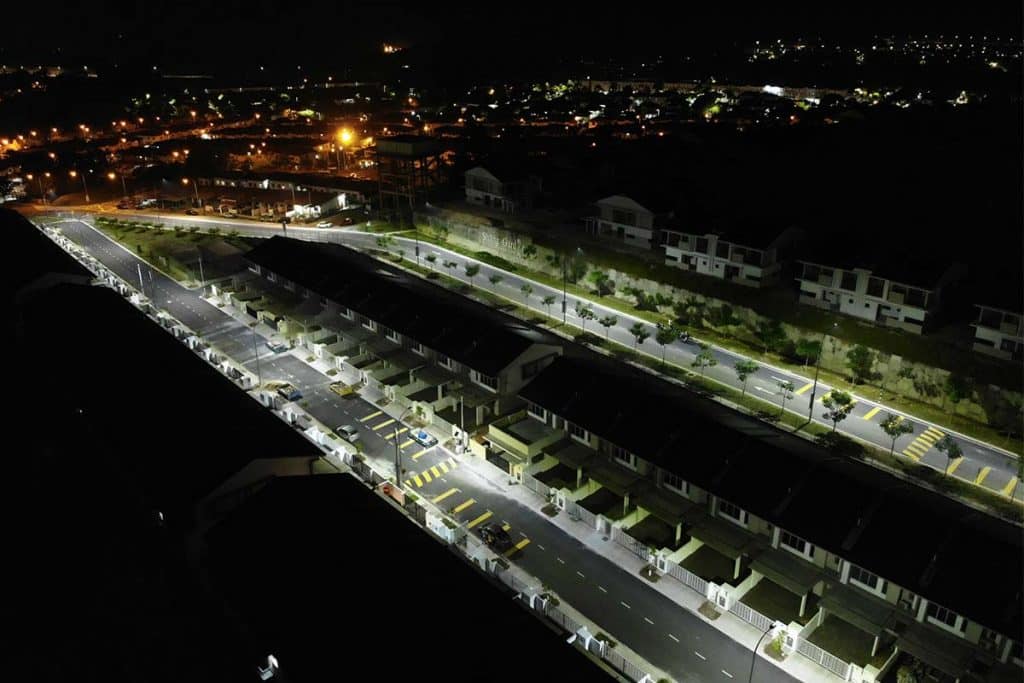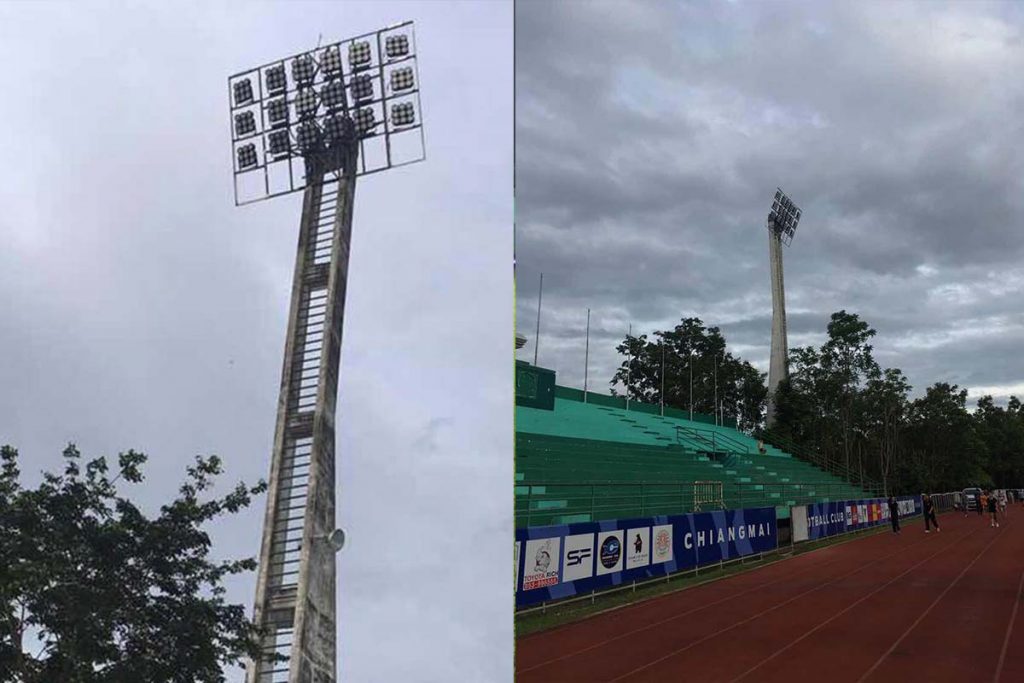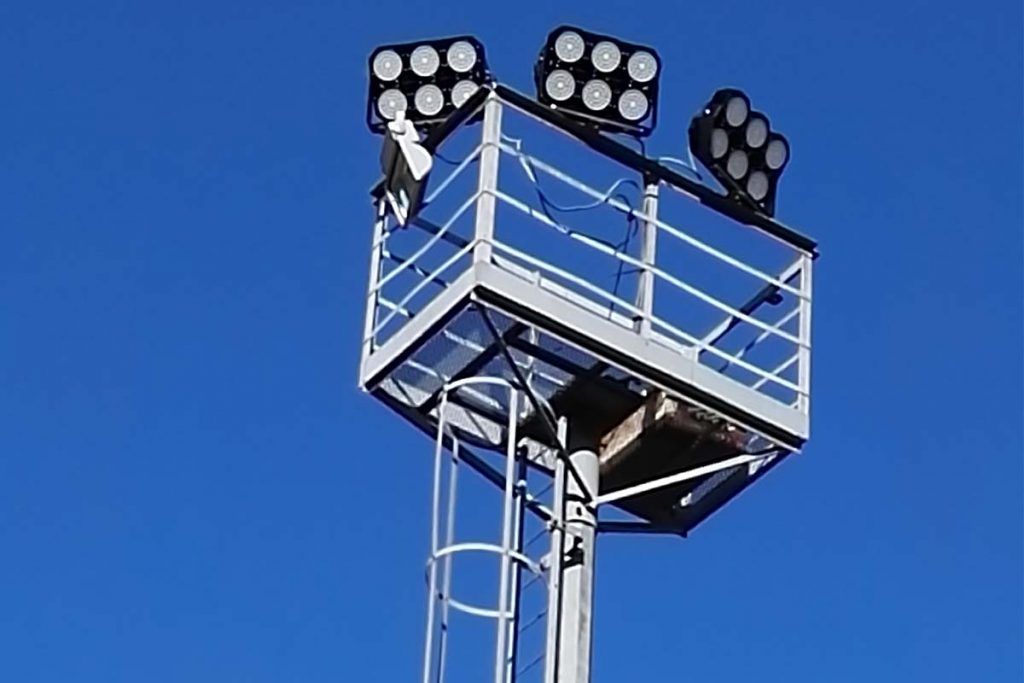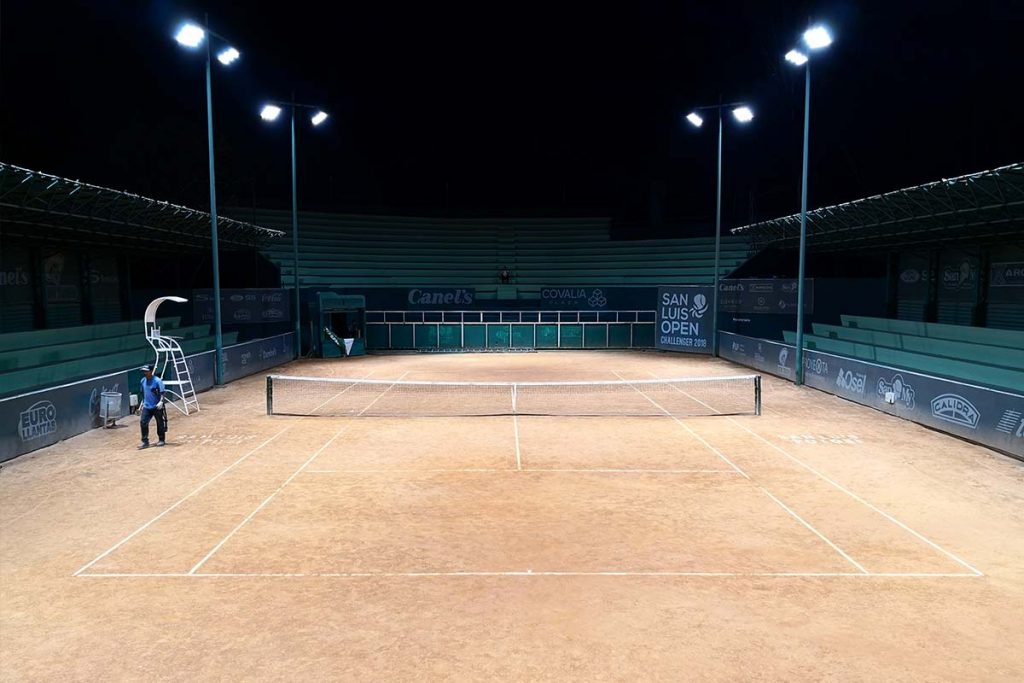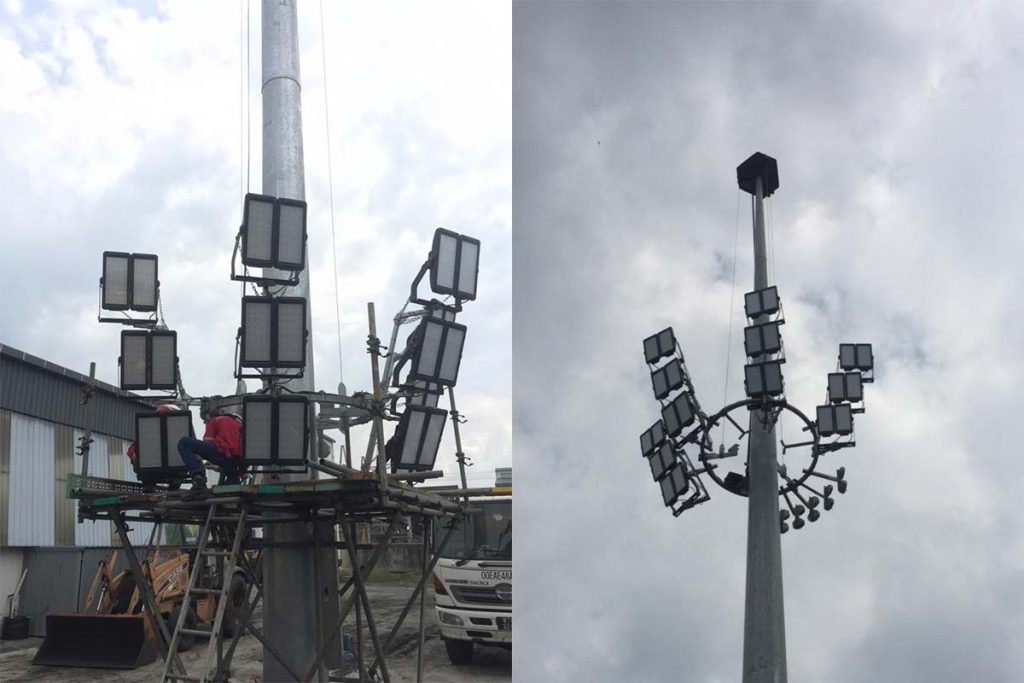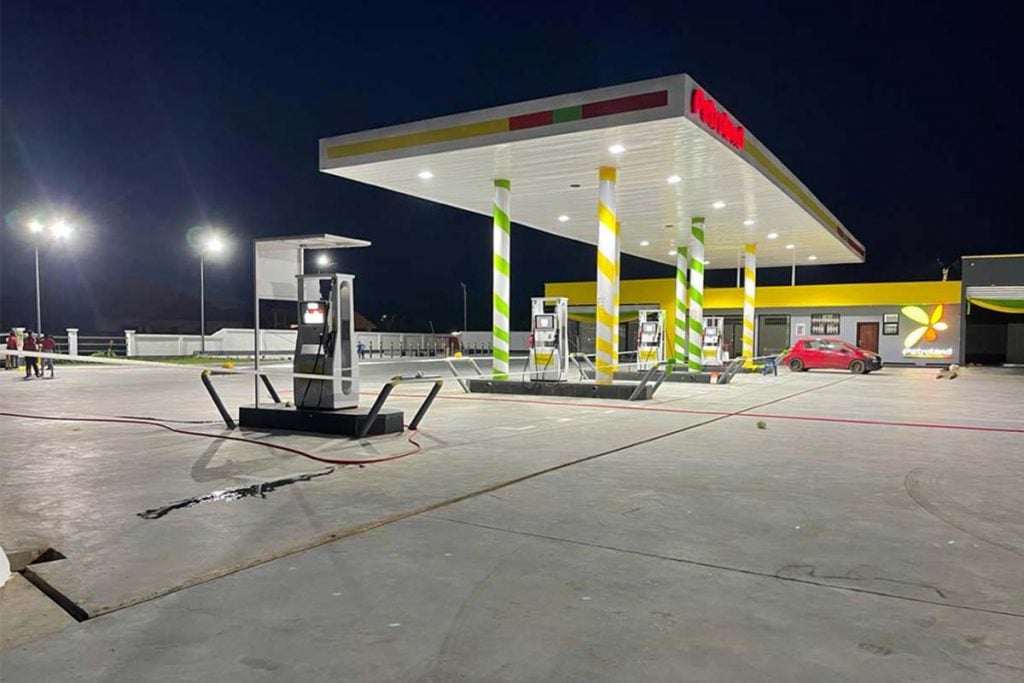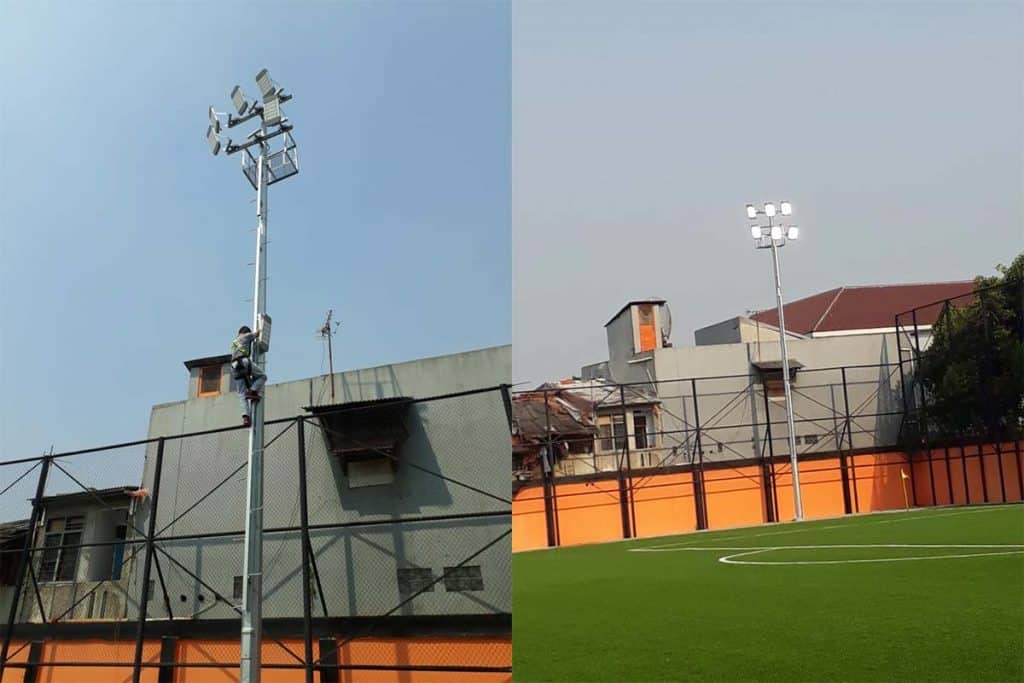Outdoor lighting design-sports fields or work places
Introduction
Outdoor lighting can be applied in many places, and we can roughly divide outdoor lighting into three categories.
Sports lighting mainly refers to the lighting of various sports venues, such as football fields, tennis courts, basketball courts, baseball diamonds and golf courses. When choosing lighting equipment for these areas, the visual requirements of various sports should be analyzed in detail. For example, the ball speed of the football field is relatively slow, and the illumination requirements can be relatively low; At the same time, if there is a need for live broadcast of the football match, the requirements for illumination and uniformity are relatively high. Although there are not many spectators on the tennis court, the required illumination of the tennis court is also very high because of the high speed of ball in the game.
Industrial and transportation area outdoor lighting, including docks, freight yards, loading and unloading stations, airports, outdoor warehouses, public works, parking lots and other places. Outdoor lighting in these areas can ensure its safe and efficient operation at night. The areas which require the installation of lighting equipment can be divided into two types in terms of light distribution: one is the area that requires good horizontal illuminance, and the other is the area that requires good vertical illuminance. The former are such as freight yards and parking lots, and the latter are such as docks and loading/unloading stations. For the latter, floodlights will be installed on high towers to ensure the visual requirements(vertical illuminance) of the staff on the crane.
Outdoor lighting of other buildings, including gas stations, sales venues, billboards, landscape lighting, and exterior lighting of factory buildings. In fact, except road lighting in streets, road lighting in campuses, residential quarters and parks can also be classified into this type of outdoor lighting.
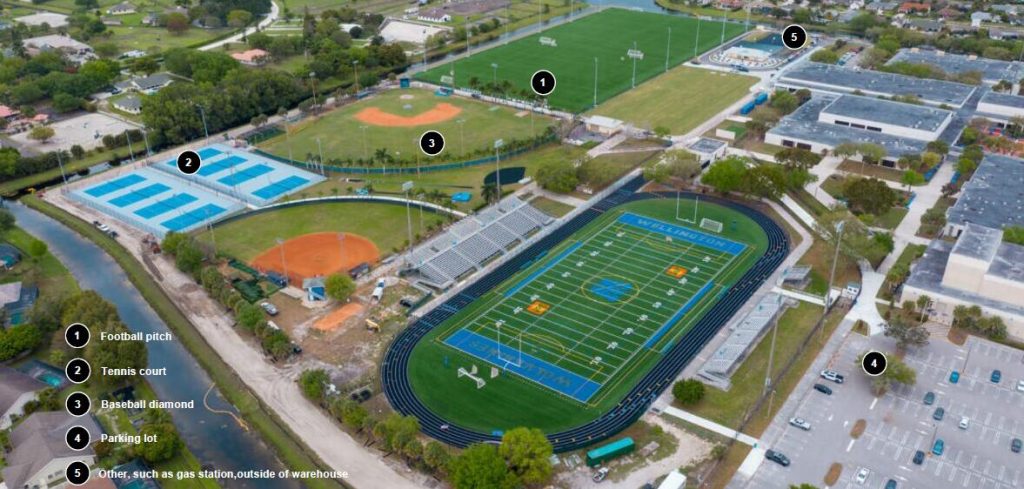
Outdoor lighting standards
The lighting standard needs to be selected for the lighting simulation of the outdoor lighting described in the previous section. There are many lighting standards, such as EN 13201 for road lighting, CIE 88 for tunnel lighting, EN 12464-2 for indoor lighting, etc. The lighting standards involved in outdoor lighting in this article are mainly EN 12193-2018 and EN 12464-1:2014. The former is for stadium lighting, and the latter is for lighting simulations in other outdoor areas, such as gas stations, parking lots, docks and airports.
Lighting standards for outdoor sports fields
In any sport, competition is getting fiercer. Good lighting has become more important for players and spectators. In order to keep up with this trend, the lighting of stadiums/sports venues must meet the corresponding standards. EN 12193-2018 provides corresponding standards for the lighting of sports venues. This European Standard deals with LED sports lighting to ensure good visual conditions for players, players, referees, spectators and CTV transmissions. The main purpose of the standard is to provide lighting requirements and corresponding guidance recommendations for high-quality sports lighting through the following methods.
- 1. Optimize the perception of visual information used in sports events
- 2. Maintain the better level of visual performance
- 3. Provide acceptable visual comfort (good uniformity and reasonable brightness)
- 4. Limit glare in sports events
Lighting standards for outdoor work places
Sufficient and appropriate lighting should be provided to enable people to perform outdoor visual tasks effectively and accurately, especially at night. The level of visibility and comfort required in many outdoor workplaces depends on the type and duration of the activity. The EN 12464-1:2014 standard specifies task lighting requirements in terms of quantity and quality of lighting for most outdoor workplaces and their associated areas. Additionally, it makes recommendations for good lighting practices. ZGSM considers compliance with the terms of this standard to be very important for these outdoor workplaces lighting simulation.
Lighting standard selection
For outdoor sports fields
Depending on the category of outdoor sports lighting, the brightness of the sports venue may vary from 75 to 750 lux. There are also requirements for uniformity of illumination, maximum glare value and color rendering ability of light sources. We believe that each venue and the level of sport that the venue is suitable for requires different lighting needs. By following the explanation of class I, II and III lighting, I believe you can choose which lighting level is most suitable for your venue needs. To Find right sports lighting fixtures for your sports complex, please check this article.
Lighting class I: Top-level competitions, such as international and domestic competitions, typically require large audience capacities and long potential viewing distances. Top training grounds can also be included in this level. For some sports, governing body requirements may be higher than the values in this standard. For example, FIFA’s lighting standard for its main stadium will be higher than the EN 12193-2018 standard.
Lighting class II: Moderate level competitions, such as those of regional or local clubs, generally involve medium audience capacities and medium viewing distances. Higher levels of training sometimes also employ this level of lighting requirements.
Lighting class III: Low level matches, such as local or small club matches, usually without spectators. General training, sports (school sports) and recreational activities also fall into this lighting class.
- a) All illuminances mentioned in the table apply to the main competition area PA. In addition, when the total area (TA) is specified in the standard, its illumination requirement should be ≥ 75% of the main area (PA), and the uniformity ≥ 75% of the main area (PA) of the considered movement.
- b) For getting better uniformity, U1hor should be ≥50% U2hor
- c) The standard of the competition and the viewing distance of the spectators should be taken into account when selecting the lighting level. The higher the competition standard, the farther the audience viewing distance, the higher the lighting level should be selected.
- d) Vertical illuminance, some sports events or high-level competitions also have requirements for vertical illuminance, we need to pay special attention to the vertical illuminance when needed.
For outdoor work places
The reference points for the selection of lighting standards in other outdoor work places are different. Below we give a selection of lighting standards for parking lots, gas stations and docks.
For parking lots, the corresponding lighting standard is mainly selected according to the volume of the traffic flow. If the traffic flow is high, the lighting requirements should be high as well; If the traffic flow is low, the lighting requirements can be lowered accordingly.
For wharf operation area in docks, the lighting standard can be selected according to the operation characteristics and operation difficulty of the operation area. For example, short-term loading and unloading of goods and continuous loading and unloading of goods in this area, cranes, and open platforms for loading goods, etc., the lighting requirement for them should be different. These can be used as a reference for selecting appropriate lighting standards.
For gas station, the entrance and exit of the gas station, the vehicle temporary parking and storage, the refueling island, and the gas gun meter reading area have different lighting standards. We can refer to the corresponding standards to properly arrange the lights in each area to meet the lighting requirements.
Dimension of outdoor areas
Dimension of outdoor sports fields
Sports venue has a playing area that is the principal area and a total area which is for additional purpose.
Principal Area (PA)
Every sport has a main playing area (such as the area within the boundaries of a basketball court or soccer – Explore the best led lights for soccer fields ) which is defined as principal area. It usually refers to the actual area of the “field” marked out for a sport (e.g. football, basketball), but in some sports such as tennis, volleyball, table tennis, the PA area includes an additional playing area around the marked area.
Total area (TA)
The total area refers to the extra safety area outside the competition field, such as football and basketball. Due to the fierce physical confrontation of this type of sports, an additional area (outside the boundary) needs to be delineated to ensure accidental injuries caused by athletes’ physical confrontation. The dimension( marked below is the playing area, while the area outside the boundary is belonging to total area.

Dimension of outdoor work places
The dimensions of the rest of the outdoor areas vary widely, with some sites having regular outlines such as a gas station, and others with complex boundaries. Therefore, for this kind of outdoor lighting, it is best to have the dimension of the project in DWG format when confirming the size. It tells us the size and shape of the area so we can insert it into our lighting software. At the same time, some projects will clearly point out the lamp poles where the lamps are placed, which is very beneficial for arranging the layout lamps in our lighting design. Of course, we can also adjust the unreasonable layout to make the lighting more reasonable when necessary.
Layout of outdoor lighting design
For outdoor sports fields
After the stadium size and lighting standards are confirmed, we need to confirm the arrangement of the sports field light, which mainly involves the position of the lamp poles and its height. Due to space limitations, here we take the football field as an example to focus on the selection of the position and height of the light pole. Smaller stadiums generally use lower-cost side lights, and eight light towers with a height of 12 to 20 meters can be installed along both sides of the field. For stadiums that are larger or require television, the lighting equipment used should not produce distracting stroboscopic effects. The stadium with stands around it generally adopts the method of installing lighting equipment on four high towers (very high, generally 30-60 meters). This method can avoid glare, but the cost is high. This kind of lighting is actually similar to the following common lighting arrangement.
Below is an overview of the number of poles, height and number of lights for other sports venues.
For outdoor work places
For the other outdoor areas such as parking lots and docks, we will find location of the poles in the DWG files in the previous section. For the gas station, normally the LED canopy lights should be placed between the two gasoline pumps to get both better horizontal and vertical illuminance for working areas. You can check more details in other blogs regarding gas station lighting.
ZGSM solution
Summary
Through this article, we hope that everyone has a certain understanding of outdoor lighting design. The football pitch and baseball field in the sports lighting simulation ( How to do sports lighting design? ) are relatively professional. If you want to know more information, you can refer to our blog regarding lighting for football and baseball. We also have another article about the tennis court, you can check the corresponding blog. Volleyball, handball and basketball are relatively similar, and their lighting solutions can refer to the blog of basketball court lighting. In addition to the lighting of sports venues, outdoor lighting also includes docks, airports, parking lots, and gas stations. Due to space limitations, you can refer to our previous blog regarding gas station lighting and parking lot lighting. For lighting of docks and apron of airport, we will raise the solution for them in the future. By this, we can serve our customers with rich knowledge reserves. At the same time, we also hope that everyone has a deeper understanding of the various steps of outdoor lighting simulation which include 1. standard selection; 2. court size; 3. luminaire arrangement; 4. luminaire selection and calculation of results. Get in touch with us to find more details
Rated Products
Related Blogs
Related Cases
People also ask
Author introduction
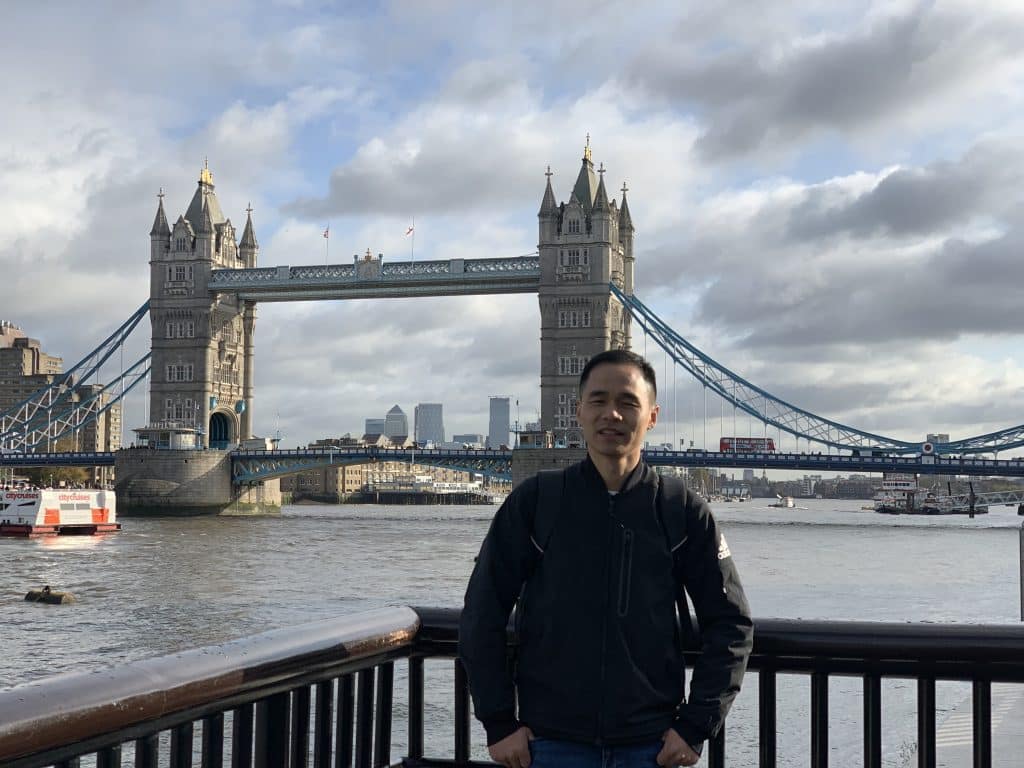
Hello Customers,
My name is Taylor Gong, I’m the product manager of ZGSM Tech. I have been in the LED lights industry for more than 13 years. Good at lighting design, street light system configuration, and bidding technology support. Feel free to contact us. I’m happy to provide you with the best service and products.
Email: [email protected] | WhatsApp: +8615068758483

